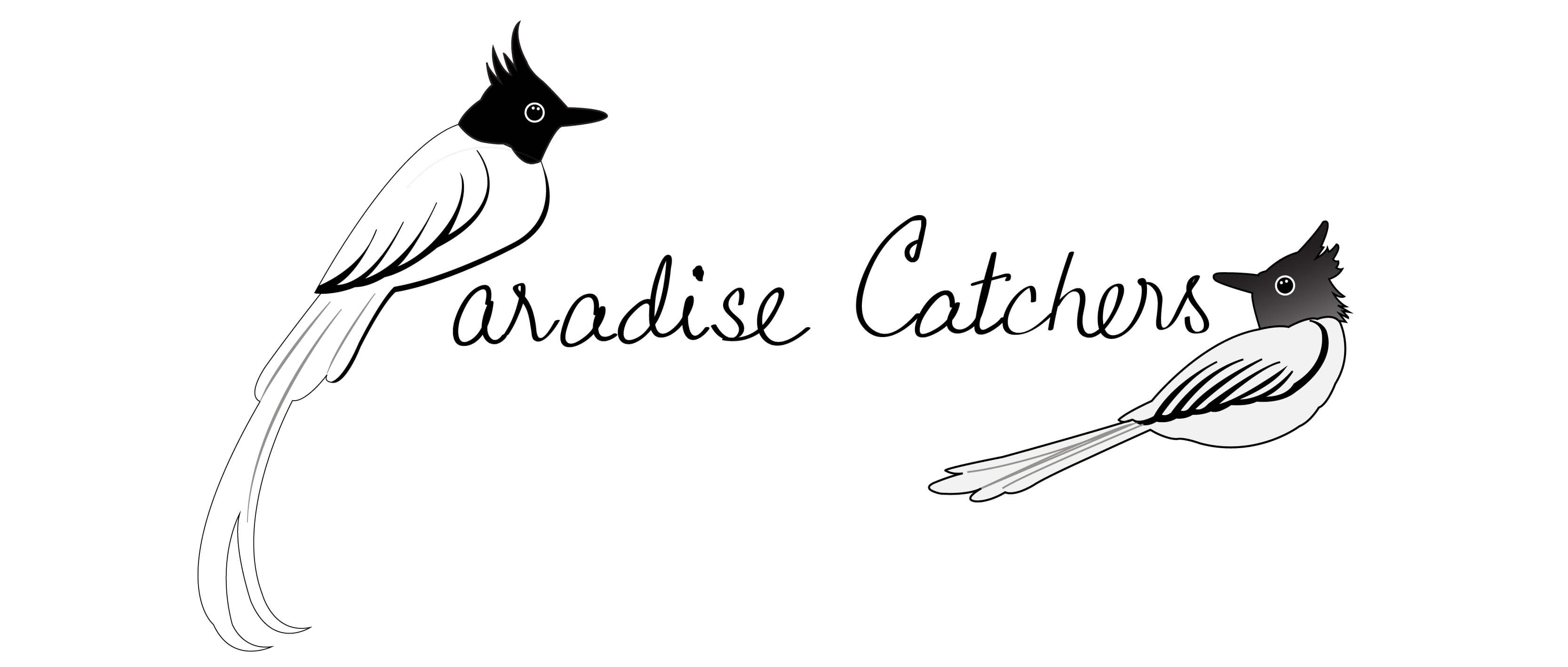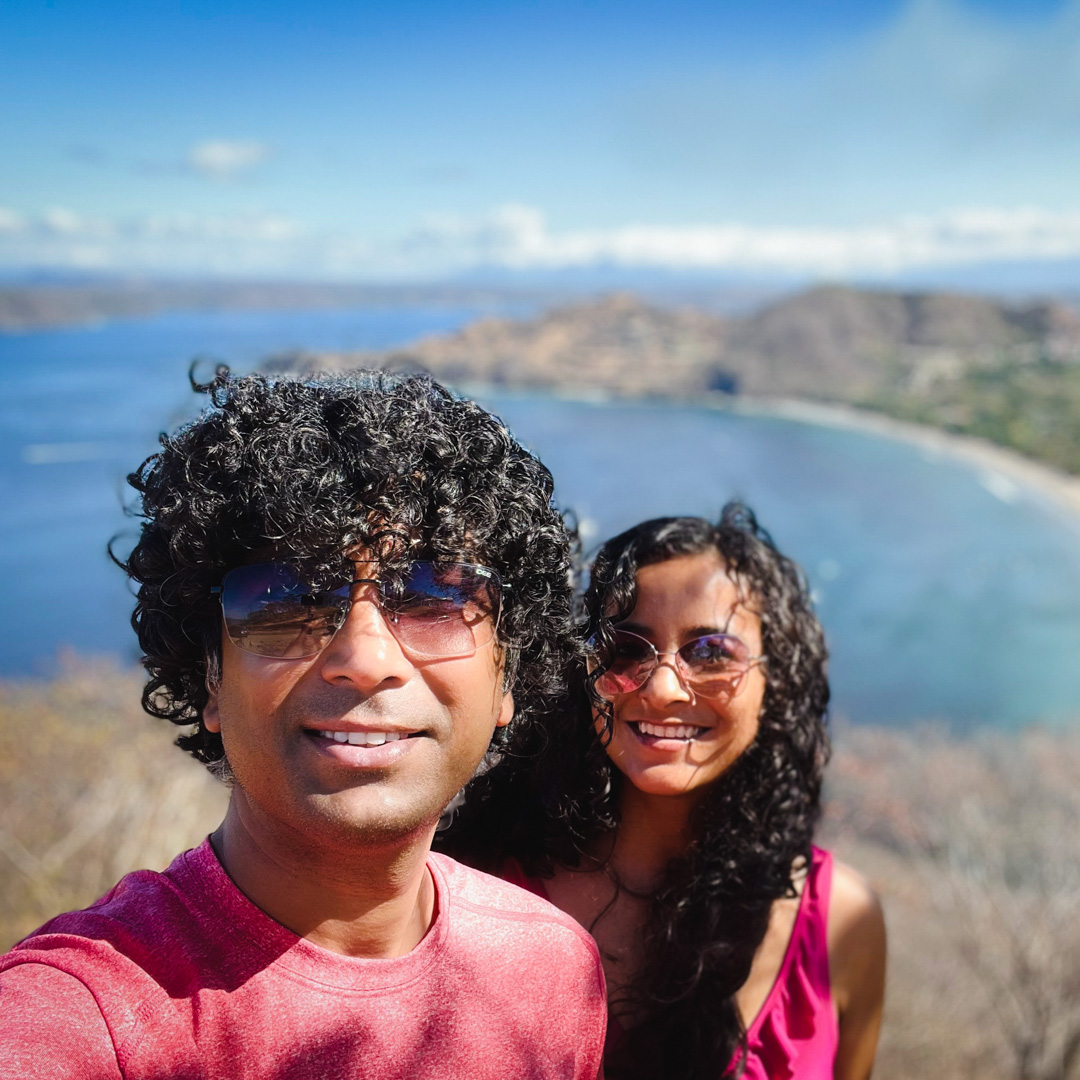Even until a few years ago, the tip of the Arenal Volcano would glow in the darkness of the night. As the volcano erupted, the crater ejected glowing hot rocks and lava flowed down the mountain slope. It has been over a decade since Costa Rica witnessed such scenes. But the volcano still stands tall, often spewing fumes, vapor and other gases, silently reminding us of its might. With its perfectly conical shape and captivating structure, Arenal Volcano still remains the pivotal tourist attraction of La Fortuna and Arenal. Although you can see the volcano from any part of the town, for the best views and closest interactions with the volcano, sign up for a hike in the Arenal Volcano National Park.
The most notable eruptions of Arenal Volcano happened in 1968 and 1992, changing the course of history and economy for the neighboring towns. If you hike in the Arenal Volcano National Park, you get to walk on the now solidified black lava rocks from the 1992 eruption. For walking on the 1968 lava trail, you can hike at the nearby private reserve Arenal 1968 Mirador y Senderos.
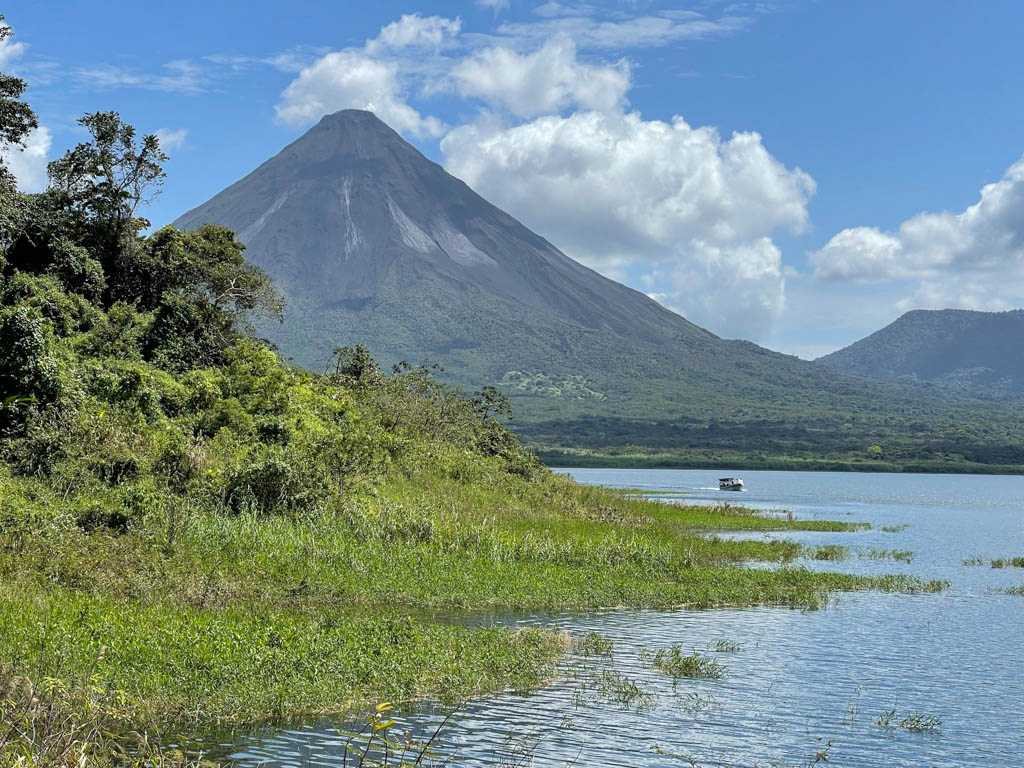
How to reach Arenal Volcano National Park
There are two sectors of Arenal Volcano National Park, the main sector called Volcano Sector and another called Peninsula Sector.
Volcano Sector
The main sector is located about 18 km (11 miles) to the west of La Fortuna town. It is a nice drive, first through the town and then on winding roads with volcano views to your left.
Here is the Google Maps location of Volcano Sector entrance.
Peninsula Sector
For Peninsula Sector, you can keep driving for another 2 km (1.2 miles) on the dirt road to the right after crossing the Volcano Sector of the national park. Alternatively, you can drive till Arenal Lake and take the dirt road on the left to head towards the Peninsula Sector.
Here is the Google Maps location of Peninsula Sector entrance.
We have a Costa Rica Car Rental Deal for you
Our Car Rental Partner: Adobe Rent A Car, 100% Costa Rican company and a trusted name, with transparent pricing.
Click here to make your reservation, with the discount automatically applied. For the details of the deal, read this article.
Car Rental Deal Highlights: ~10% discount on base rate (varies by dates and demand), free extra drivers, booster seats and baby seats at no extra cost, free door-step delivery of rental car to houses, condos and hotels near Adobe Rent A Car offices.
La Fortuna town is 114 km (71 miles) away from San Jose International Airport and 143 km (89 miles) away from Liberia International Airport.
Volcano Sector of Arenal Volcano National Park
The volcano sector, as the name suggests, is closer to the Arenal Volcano and home to lava trail, amazing viewpoints of the Arenal Volcano and giant trees that survived the eruptions.
There are 3 trails in this sector, Heliconias, Las Coladas and El Ceibo, each having its own importance.
Mirador Volcanic Cone
The Heliconias trail is accessible by car and goes all the way to a viewpoint – Mirador Volcanic Cone. After crossing the ticket counter, drive for a kilometer passing by a second parking area and you will find the Mirador Volcanic Cone at the end of the road.
The viewpoint is on a platform with shade, from where you can appreciate the panoramic view of the Arenal Volcano and the surrounding forests while staying protected from the sun or rain.
You can spend some time gazing at the volcano and the fumes before going back to start the hike.
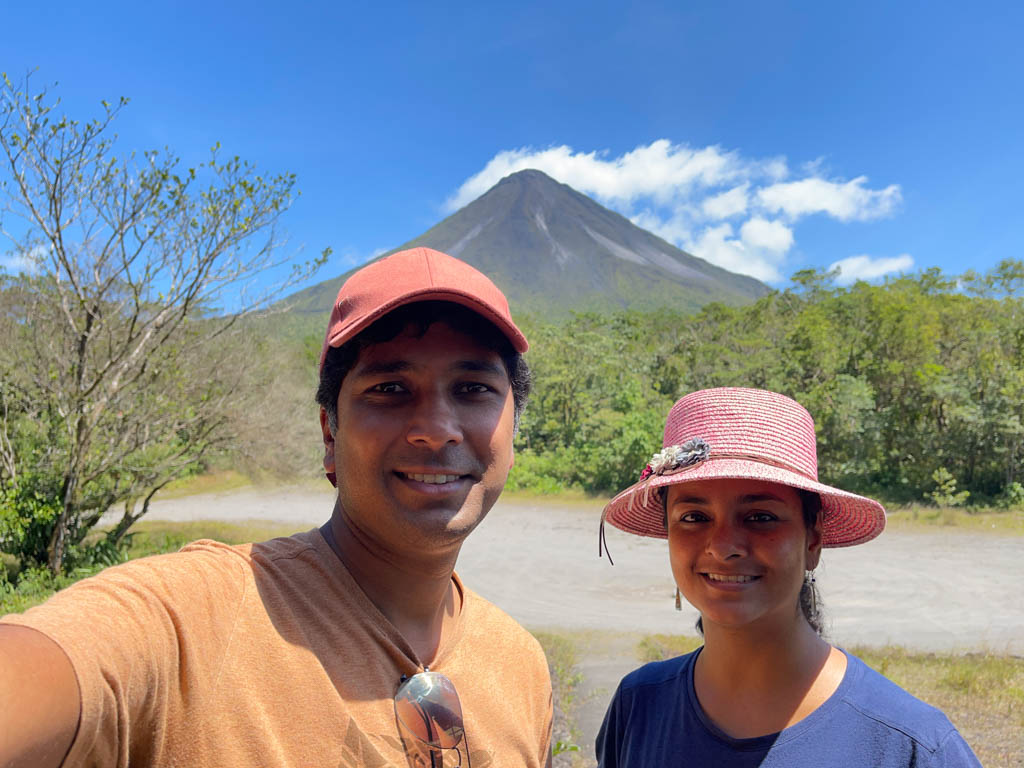
Las Coladas Trail
The 2 km (1.2 miles) Las Coladas trail starts right from the second parking area. The trail starts with tall bamboo-like grasses lining the path. The secondary forests in this section have recovered after the 1992 eruption. There is not much shade in this part of the trail, however, the flat track makes it easy to walk. On this trail, we occasionally found lava rocks which have turned black over time.
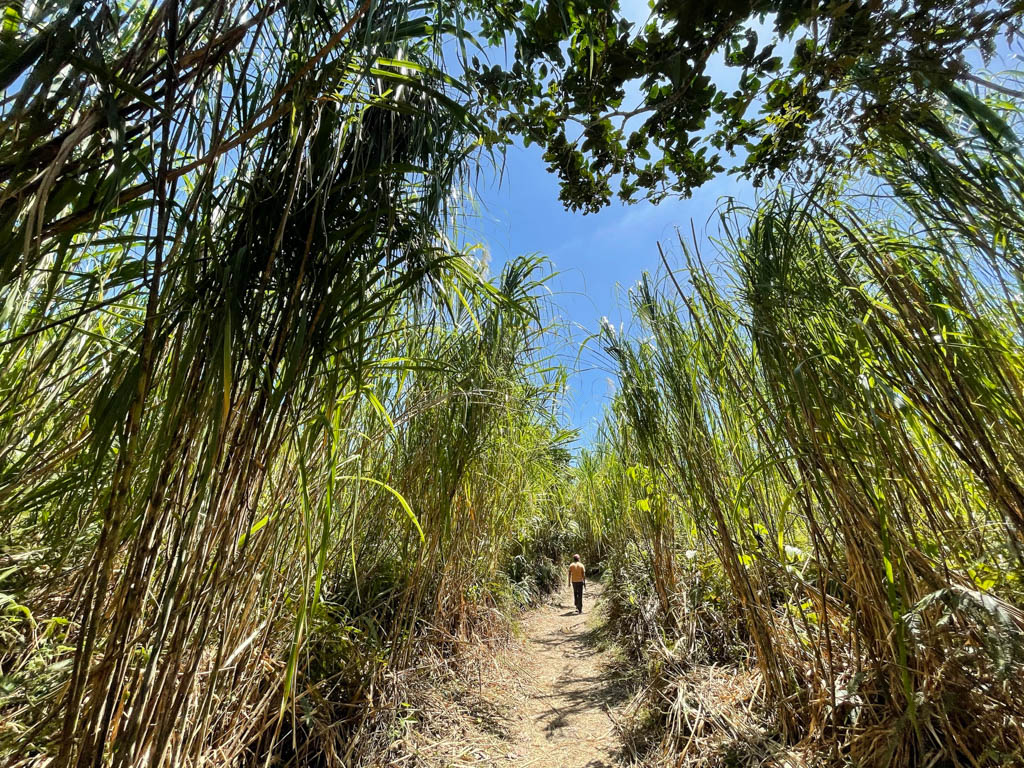
The last section requires a bit of climbing to reach the view point of the Arenal Volcano. You will hike on the dark volcanic rocks up a tiny hill.
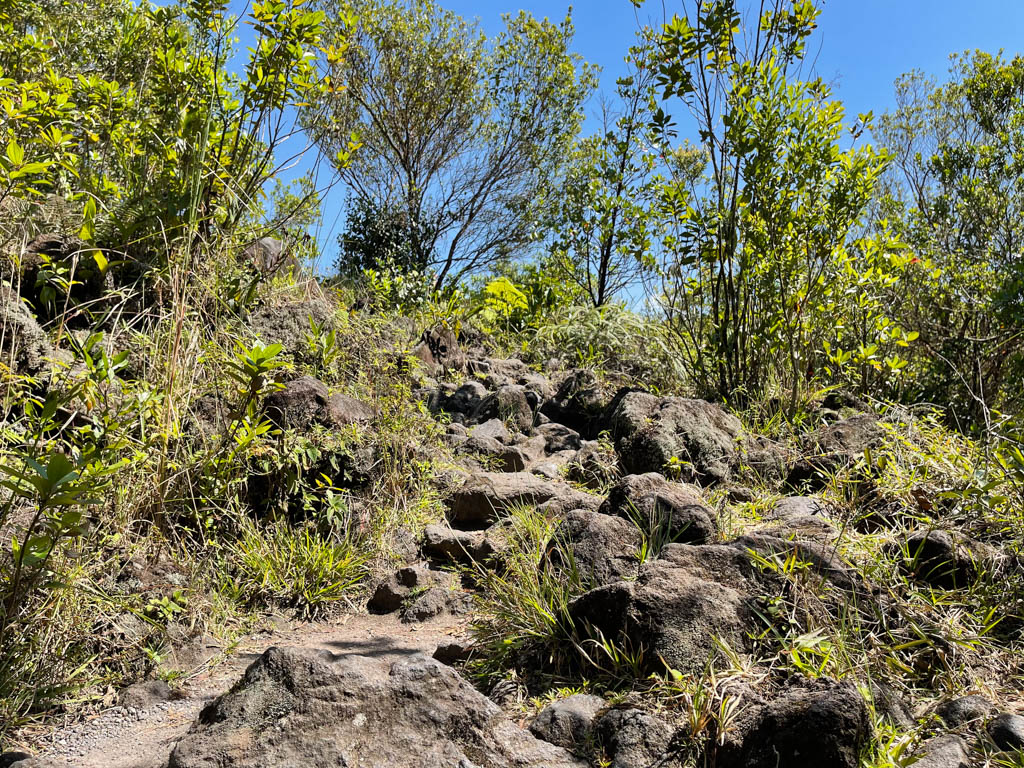
There is a small open area at the top. This elevation helps in getting an unobstructed view above the forest and you will see the majestic Arenal Volcano on one side and the vast Arenal Lake on the other.
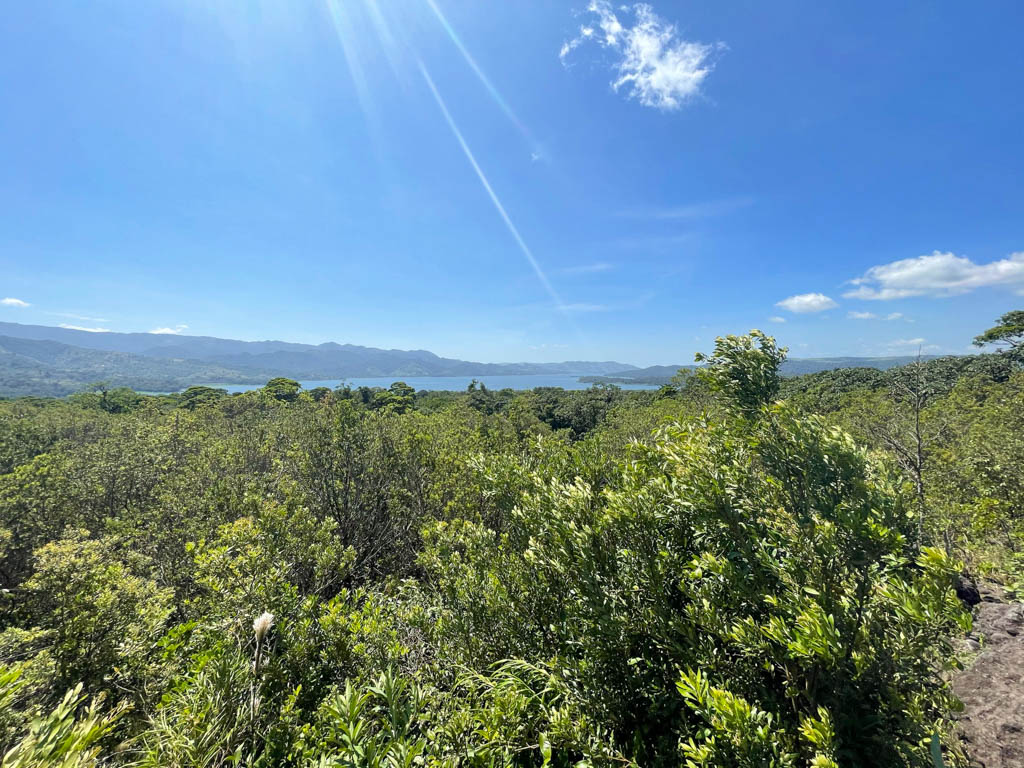
We hiked on a clear sunny day and the peak was visible. You can spend some time sitting on the lava rocks and enjoying the views of Arenal Volcano throwing out fumes and creating tiny white clouds.
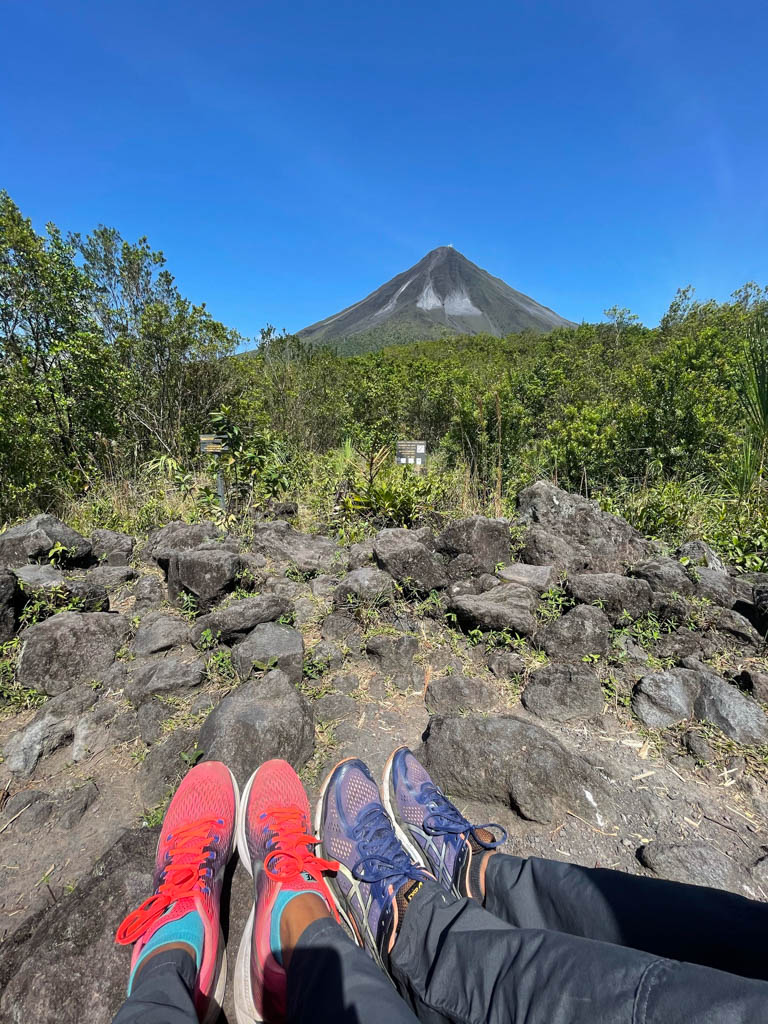
Even if you find the peak hidden in the clouds, the miles of canopy and the base itself create a dramatic look.
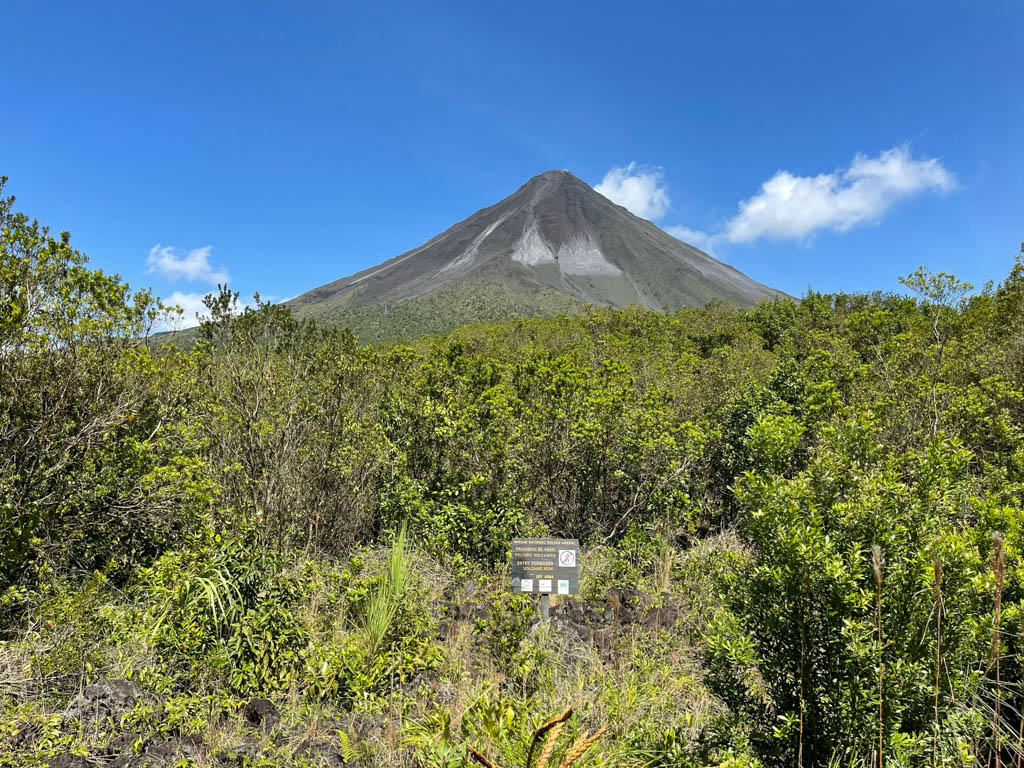
El Ceibo Trail
El Ceibo is a circular trail with thicker forests and has better chances of finding wildlife. This trail is flat as well and the shade just makes it even easier and pleasant to walk on.
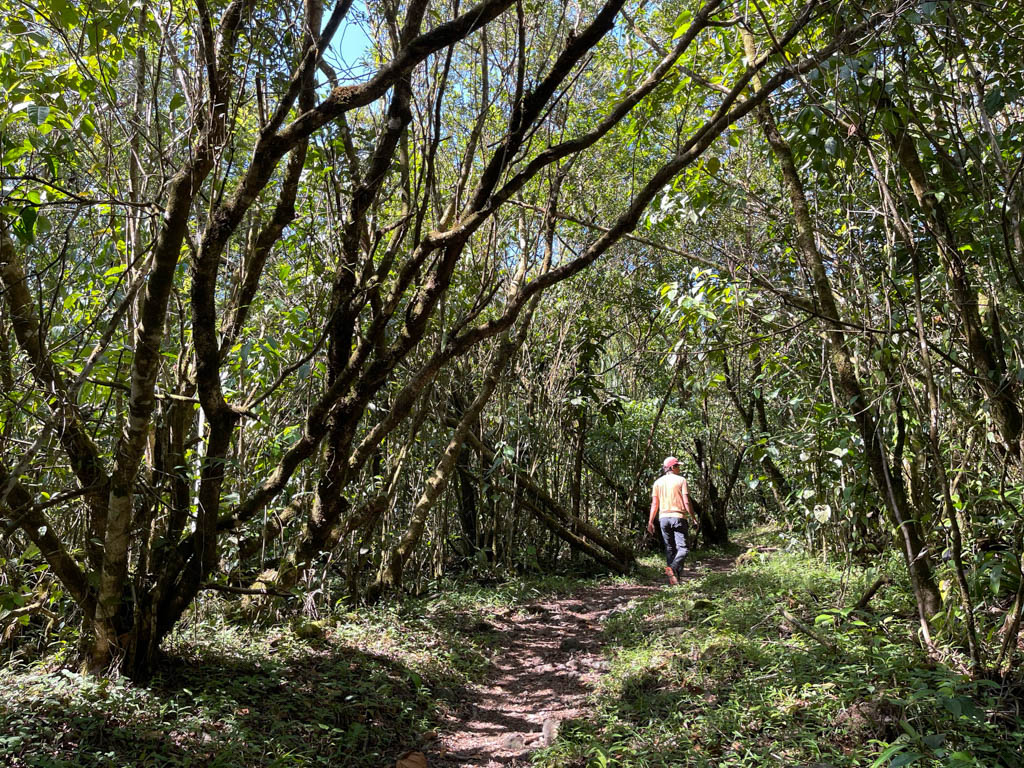
There are 2 ways to access the trail. The first point of entry comes after few hundred meters on the Las Coladas trail. If you decide to take this diversion, you can complete the El Ceibo trail first and then end up in the volcano view area of the Las Coladas Trail. Otherwise you can keep hiking on Las Coladas and do the El Ceibo after completing the the volcano viewpoint.
El Ceibo trail is often decorated by the sprawling roots of the trees. While the volcano is not visible, the highlight is a 400 years old giant ceibo tree roughly midway through the trail. The roots, tall as humans or more, protrude from the ground. If you go near the tree, it feels like a huge snake attempting to embrace or swallow you.
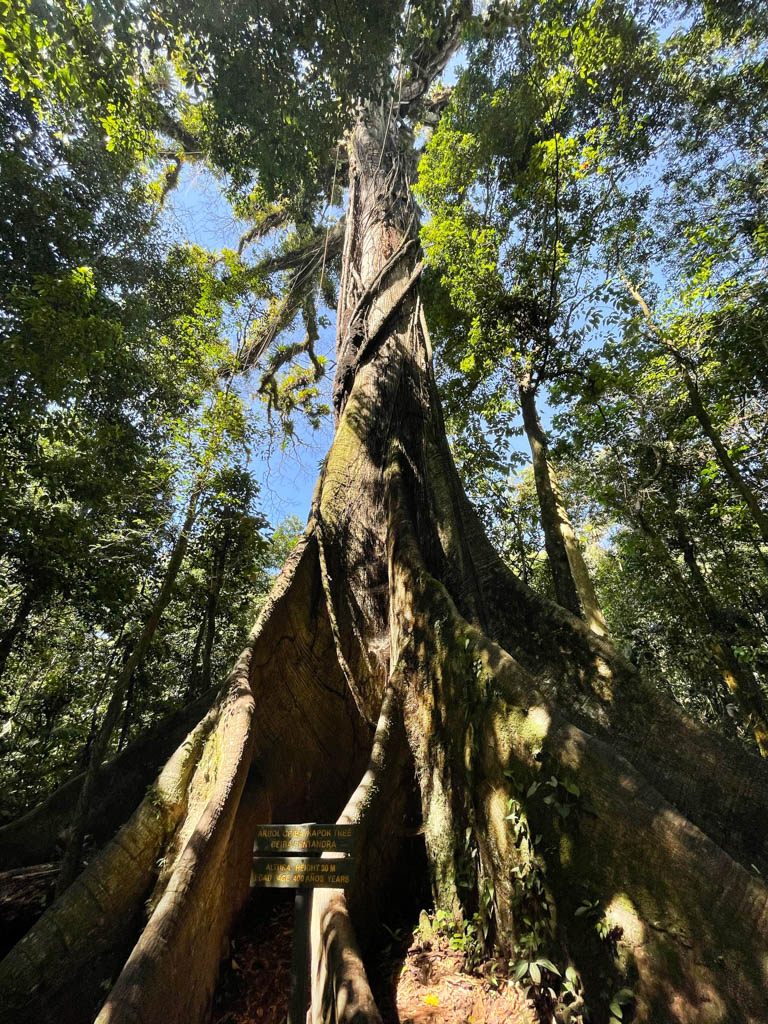
There are other huge trees that miraculously survived the eruptions and are now home to several species of birds and animals. As you reach the end of El Ceibo, the vegetation gradually changes and turns similar to that of Las Coladas.
Wildlife
Although the main attractions of Arenal Volcano National Park are the volcano views and the lava trails, you will also get the chance to observe wildlife along the trails. We got to see capuchin monkeys, and birds like white-throated magpie jays and great currasows, among others.
For more birding opportunities (and almost guaranteed sloth sightings) in the La Fortuna area, take a trip to Bogarin Trail.
The Peninsula Sector of Arenal Volcano National Park
The Peninsula is a comparatively newer sector of Arenal Volcano National Park. It is located 2 km away from the Volcano Sector. The trails in this sector are well paved, thus making it convenient to hike here for all types of travelers.
Main Trail
The main trail starts from near the entrance, passes through the jungle and goes till the end of the peninsula where the land meets Lake Arenal. The distance is 1.5 km (0.9 miles) one way. For return, you have to retrace the same route. Otherwise, you can choose to take a diversion to the side trail (see next section).
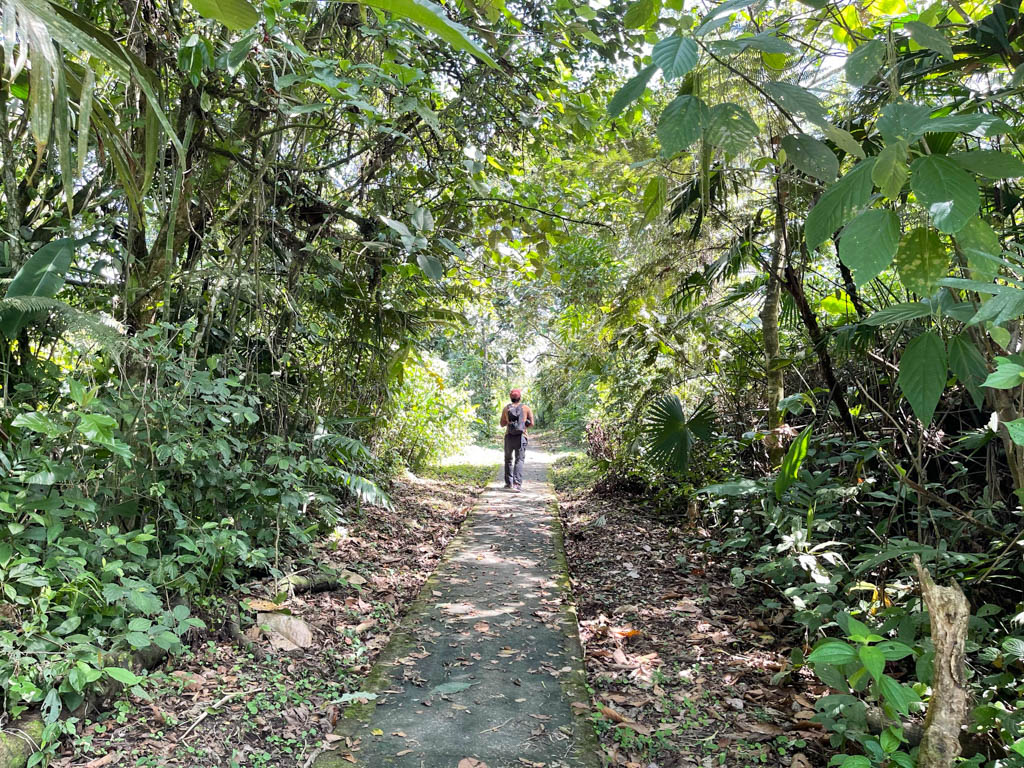
Along the trail, you will come across two viewing platforms where you can sit and relax. From both these platforms, you get a partial view of the Arenal Lake, often with little green islands popping out of the blue water.
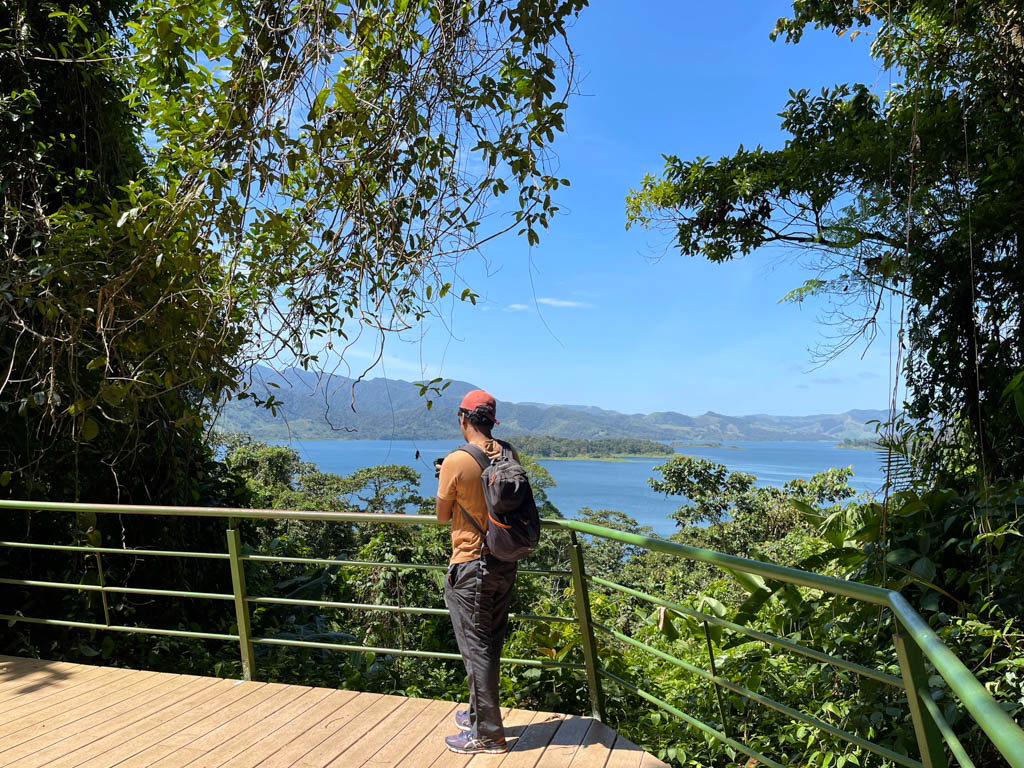
Further along the trail, about 200 meters before the end of the peninsula, there is a watch tower. This watch tower is not as high as the one at Arenal Observatory Lodge or the one at Santa Elena Cloud Forest Reserve. But at this watch tower, from a height of 12 meters, you do get lovely views of the volcano and the lake.
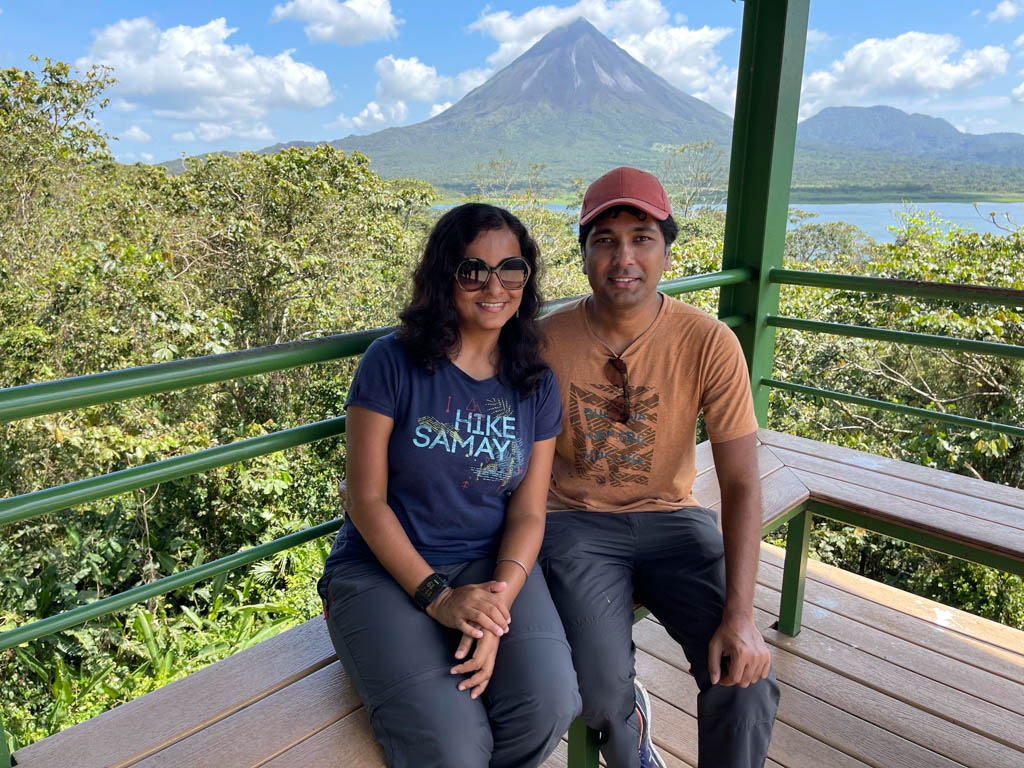
As you reach the edge of the lake, you will find the third and the last viewing platform. We hung out at this platform for a while, and absorbed the 360 degree views from there. With the mighty Arenal Volcano and the vast Arenal Lake grabbing our awe, everything else seemed to have come to a standstill. Birds dipping their beaks in the water to hunt fish, kayaks and moving tour boats occasionally created ripples to the calm waters of the lake. And the volcano stood a silent witness to everything happening around, just like it has for ages. This is one of the most calming spots of the national park.
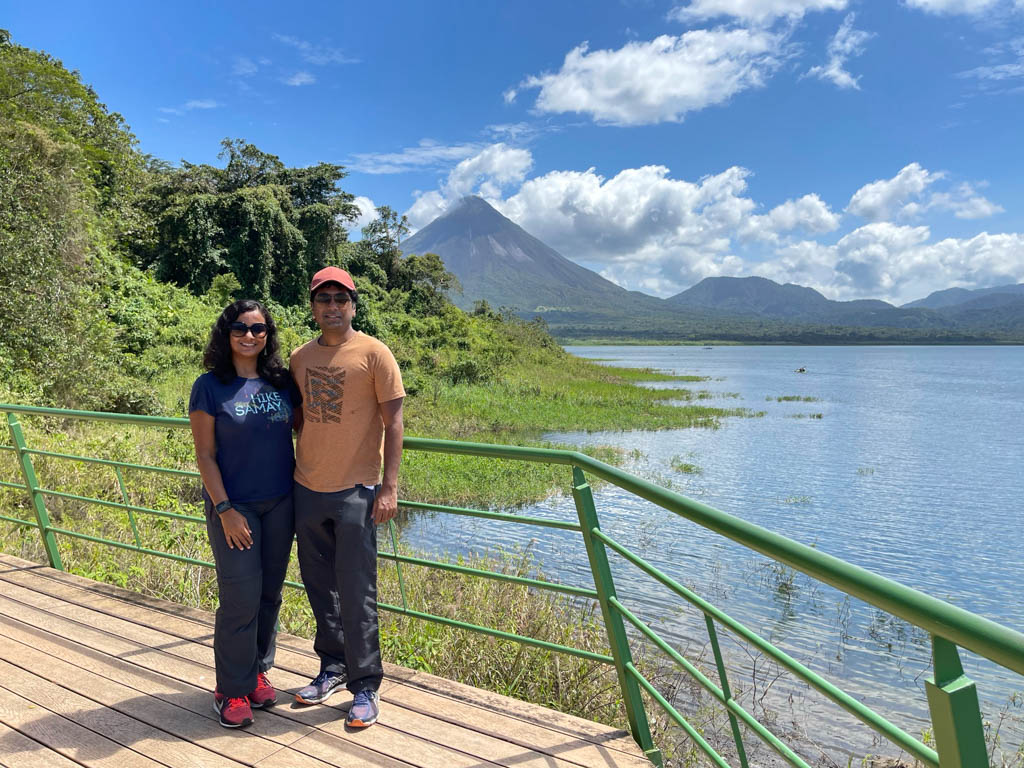
Side Trail
You can take a detour from the main trail to walk on the side trail. This branches out from the main trail and connects back to the main trail again. In between, the distance is 600 meters (0.4 miles).
Although, it is a short diversion, this route passes through more dense section of the jungle. You also get to walk on a wooden bridge along this trail. We took the side trail for the return trip and it turned out to be an interesting detour. But note that this trail has more elevation gains and drops, unlike the flat main trail.
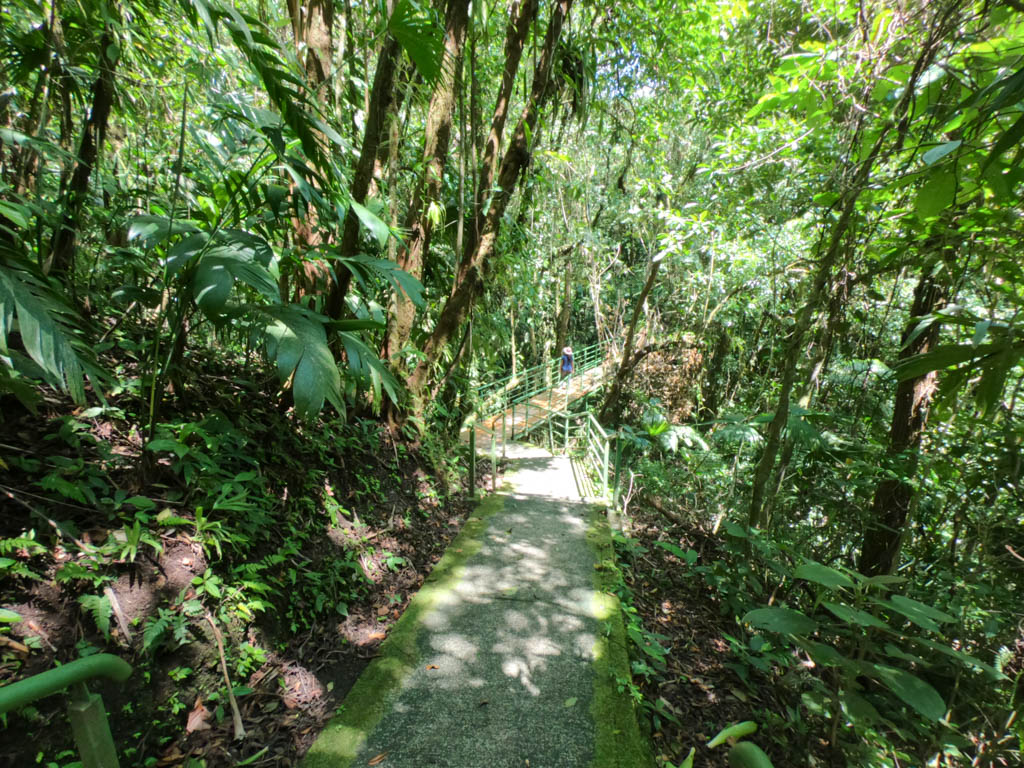
Wildlife
Since land meets lake in the Peninsula Sector, you will get the chance of observing both land and aquatic birds. We got to see some colorful lizards and a few species of birds, including antshrikes.
Sector Peninsula sees an uncommon behavior of bonding between Keel-billed Motmots and Broad-billed Motmots. But we had not spotted either during our trip. Let us know if you do, when you visit this sector.
Booking Information, Hours, Costs
Booking
You can purchase the entry tickets from the office at the entrance of the national park. The ticket will be valid for both Volcano Sector and Peninsula Sector, for the day of the ticket purchase.
As of February 2021, online reservation option is not available for this national park.
At the time of our visit in February 2021, only card payment is accepted.
Hours
The park is open all days of the week.
The visiting hours for the Volcano Sector is between from 8:00 am to 4:00 pm. Last admission is at 2:30 pm.
The Peninsula Sector is open from 8:00 am to 5:00 pm. Last admission is at 4:00 pm.
Entrance Fees
The entrance fees vary by Costa Rican nationals/residents and foreign visitors.
- Foreign nationals | Adult: 15 USD
- Foreign nationals | Child: 5 USD
- Costa Rica citizens and residents | Adult: 1,000 CRC (~1.6 USD)
- Costa Rica citizens and residents | Child: 500 CRC (~0.8 USD)
Other Important Information
Parking: At the Volcano Sector, there is a large parking area inside the national park. At the Peninsula Sector, the designated parking area accommodates only a handful of cars. But you can park on the road near the entrance.
Restrooms: There is a restroom area towards the beginning of the trail at the Peninsula Sector. In the Volcano Sector, restrooms are available only near the entrance.
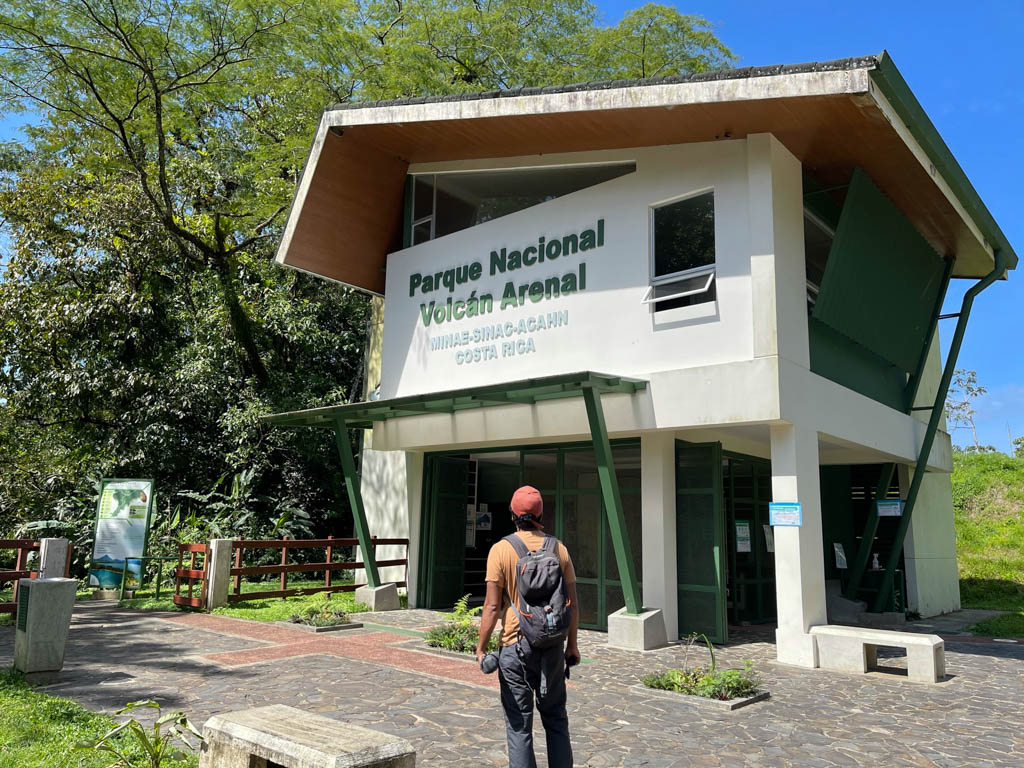
Best Time to Visit Arenal Volcano National Park
You can visit Arenal Volcano National Park at any time of the year. However, we recommend to choose a clear sunny day for chances of better volcano views. Sometimes, even on a sunny day, the top conical part of the Arenal Volcano can remain covered in clouds, mists or vapours.
So, to plan a perfect day of volcano views, you will be at the mercy of the notoriously fluctuating weather of La Fortuna de San Carlos.
Rainy season in La Fortuna runs from late April/ May till November/ early December. However it can rain any time of the year. Also, during the rainy season, you can get bright sunny mornings before it starts pouring in the afternoon.
We have visited La Fortuna and Arenal in the months of August (twice), November and February (twice). The rainiest weather we got in La Fortuna was in February 2020 when it poured so heavily that not even the base of the volcano was visible! In our recent visits, in November 2020 and February 2021, we got the perfect weather with bright sunny days and clear volcano views everyday of our trip. We got clear days even during our trips in August.
The message here is that you cannot predict the weather in La Fortuna and the visibility of the volcano does depend on the weather. So, it is best to plan for a few days in La Fortuna and be flexible with your itinerary to move activities around. For example, you can enjoy the hot springs even if it is raining. But if you wake up to a sunny day, head to the Arenal Volcano National Park.
What to Wear? What to carry?
The trails at Arenal Volcano National Park are mostly easy. Wear hiking shorts/ pants, shirts/ tops of breathable fabric to beat the heat (during sunny days) and comfortable walking shoes.
Carry light jacket for cooler days and raincoat for any time of the year. Put on caps/hats and sunglasses for protection against the sun.
Bring drinking water as there are no water taps along the trails, except for near the entrances.
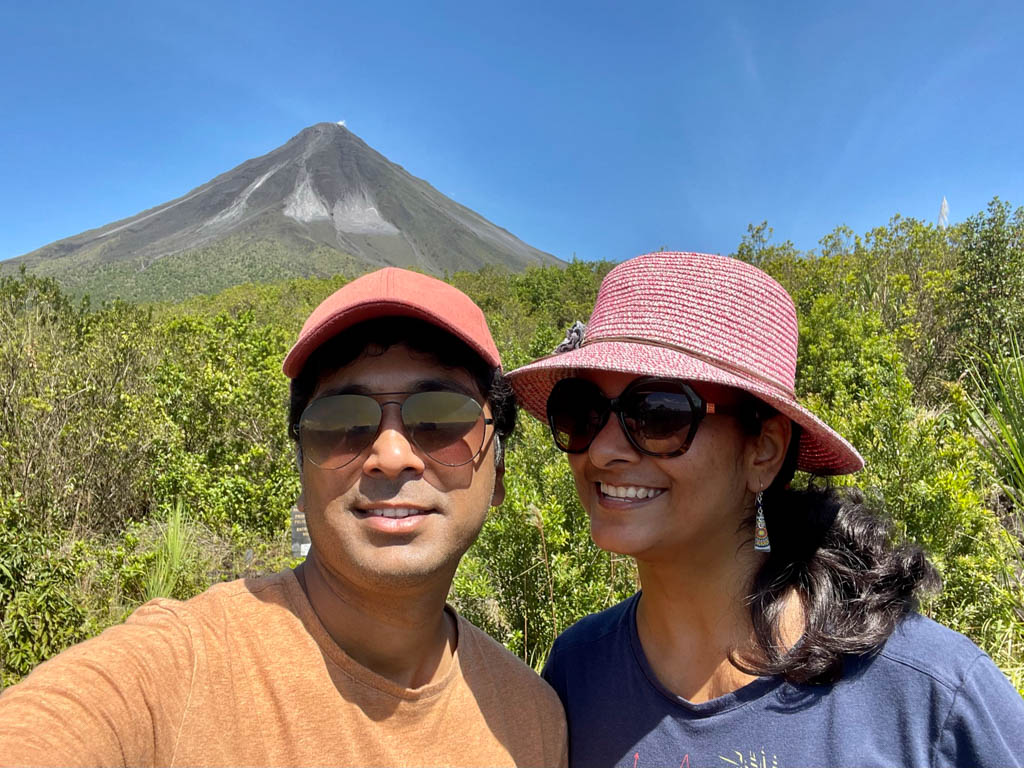
Final Thoughts on Arenal Volcano National Park
There is something about the Arenal Volcano that draws visitors to it. The perfect shape, the fuming peak, the forests and wildlife around, whatever the reason is, it is difficult to get tired of the view.
The Arenal Volcano National Park takes us up close to this majestic volcano and its history of eruptions still remaining on the trails. It also tells the story of how life has found its way after the destruction.
Thus, the fascinating geography and a stirring history come together here, making the hike in the national park one of the best things to do in La Fortuna and Arenal.
Plan your La Fortuna trip:
Eco Termales Hot Springs: Romance in the Rainforest
Bogarin Trail: Awesome bird and sloth spotting
Like the post? Pin it!


